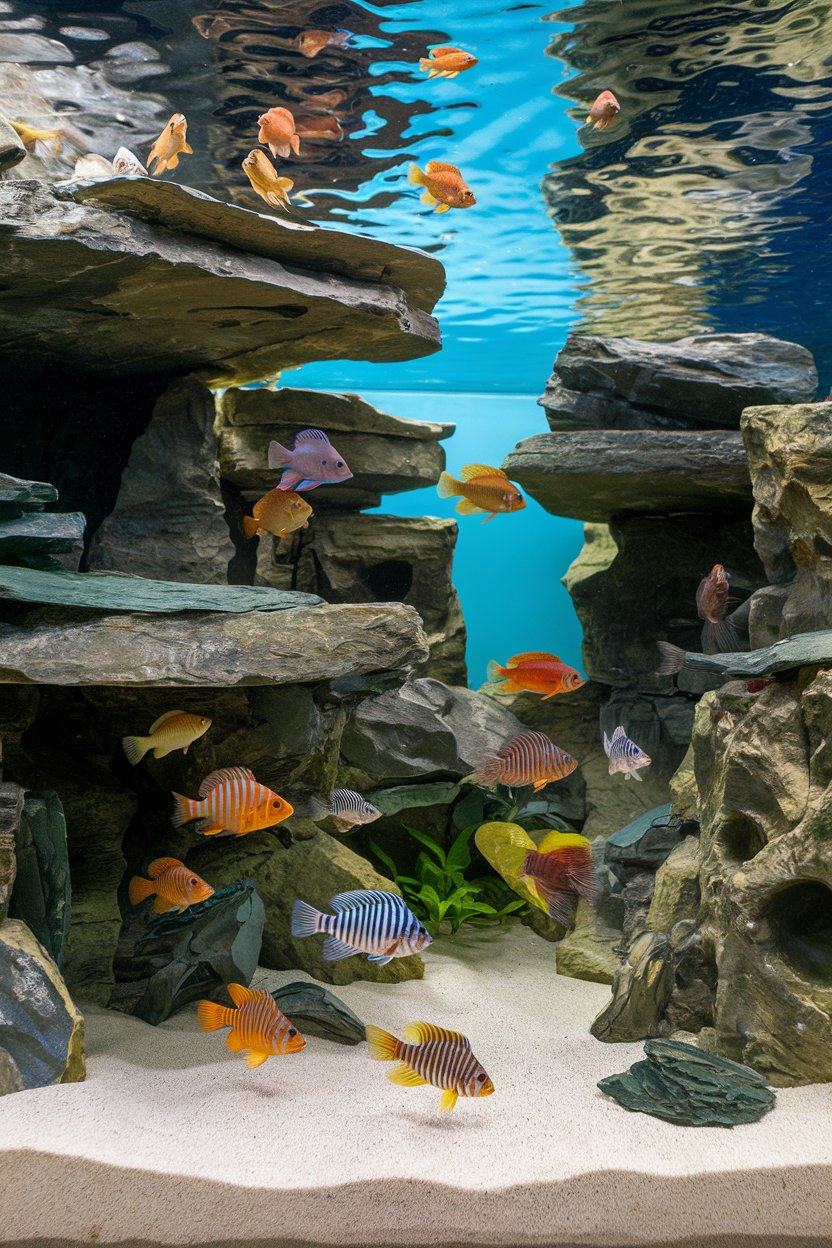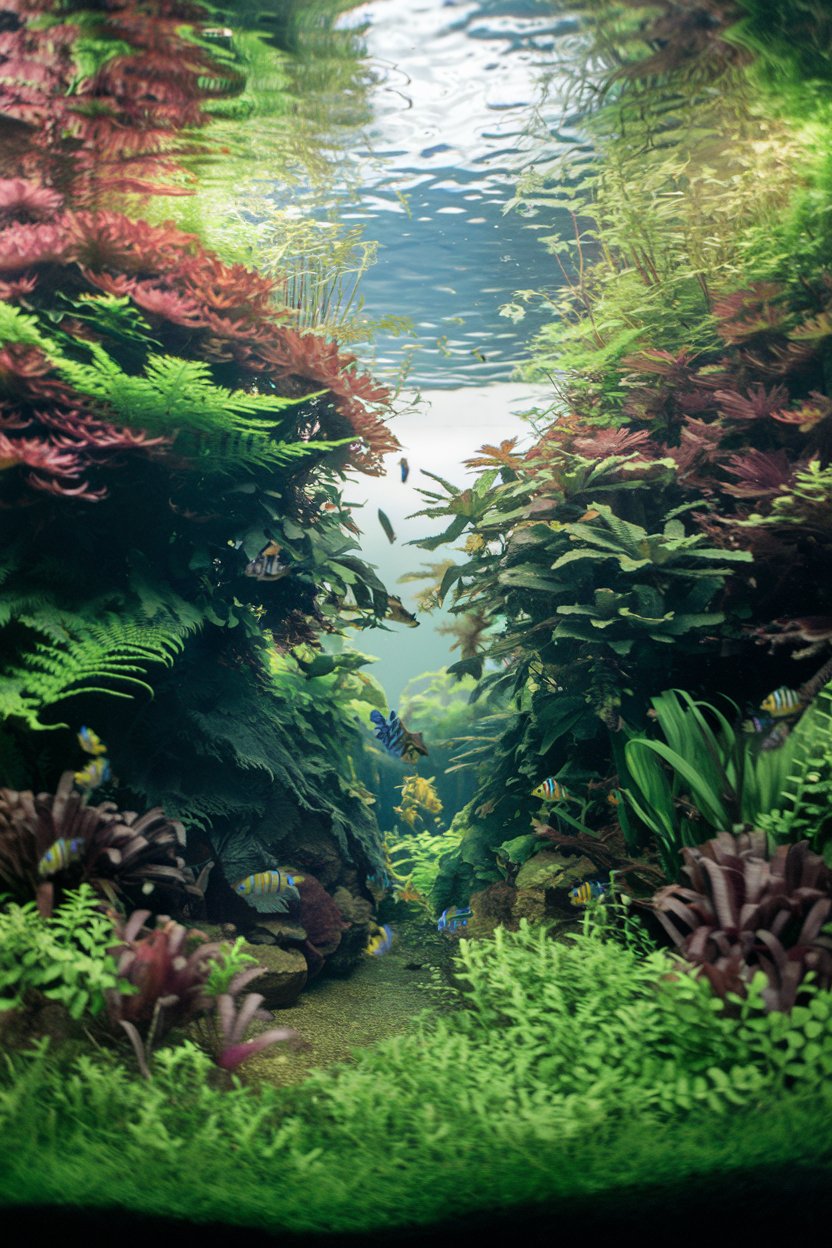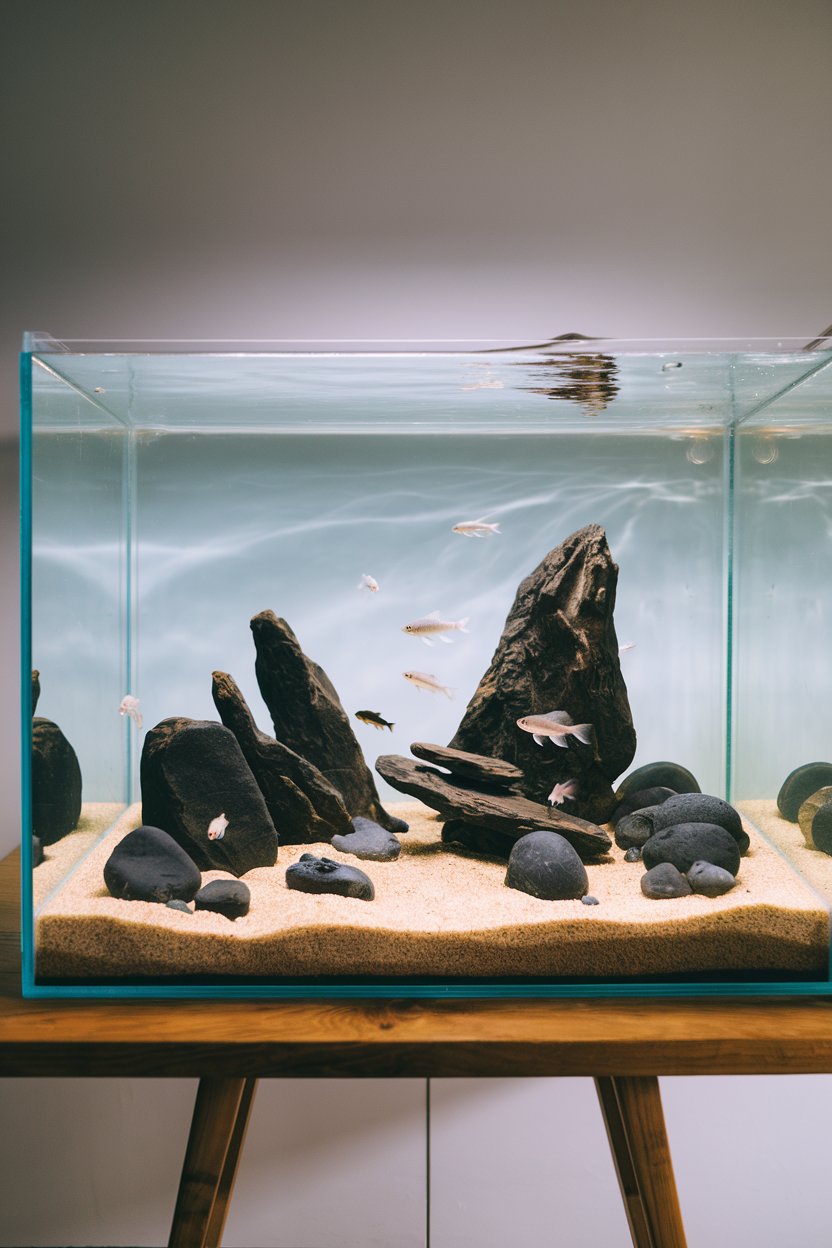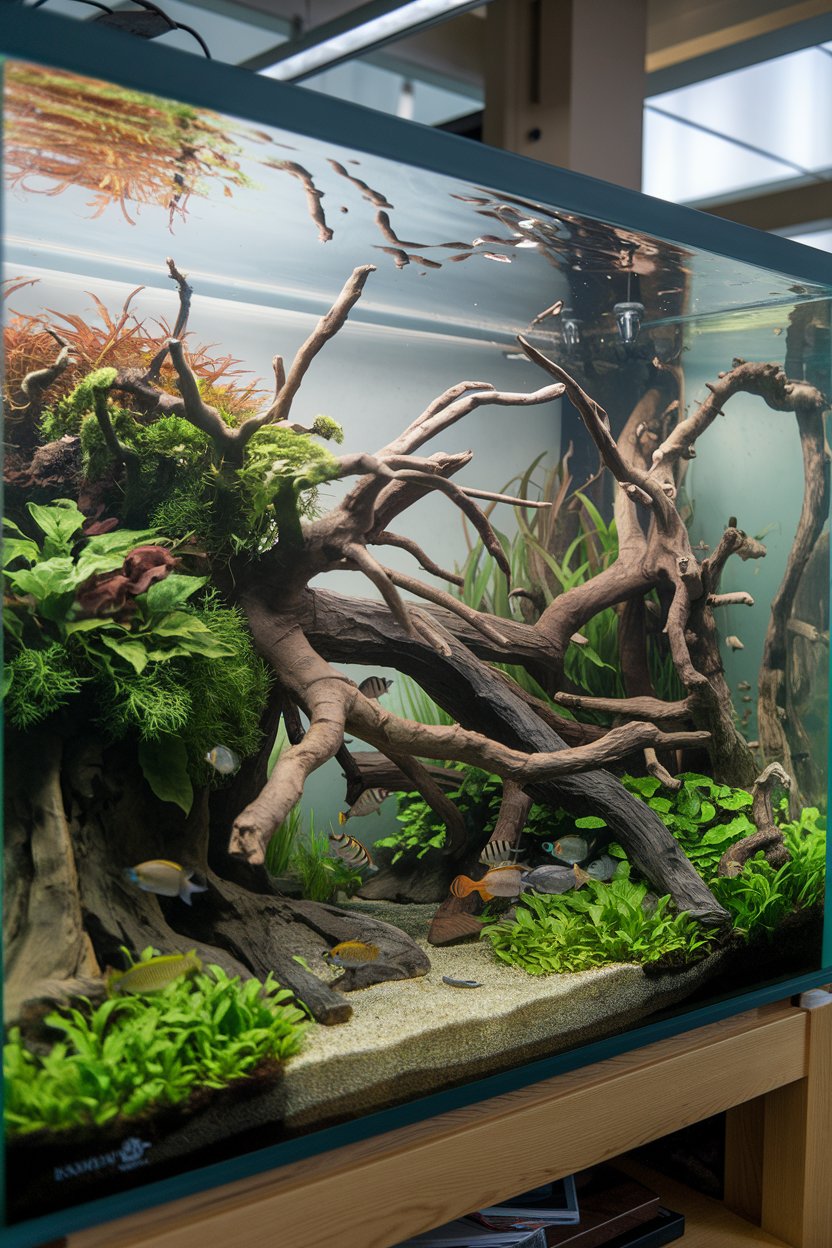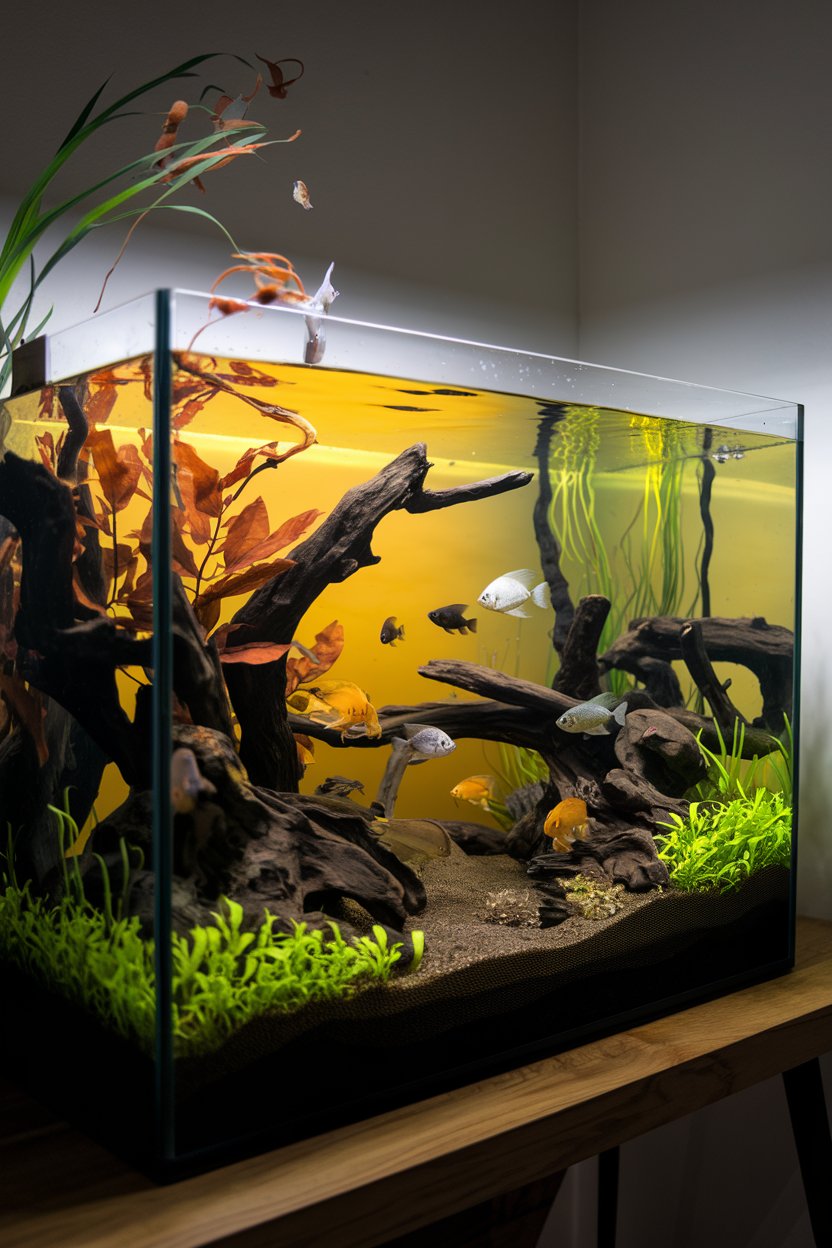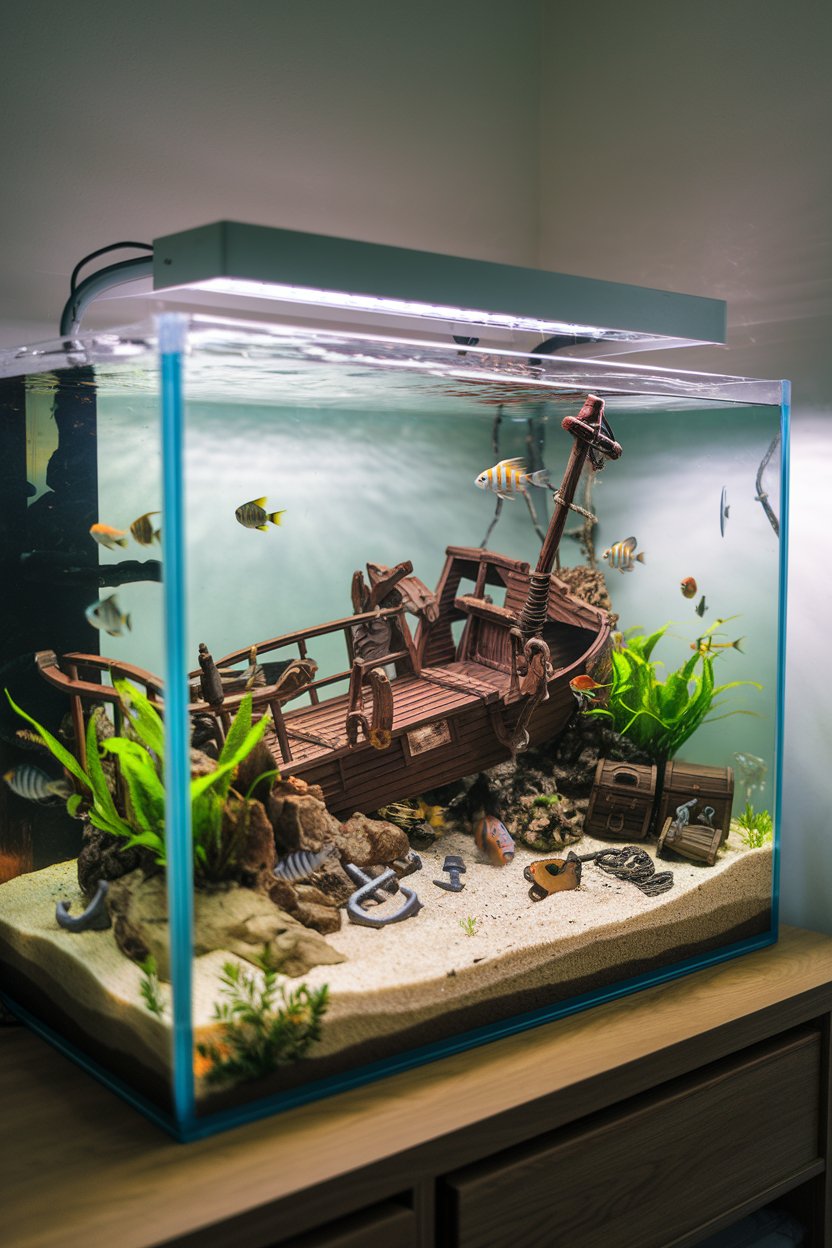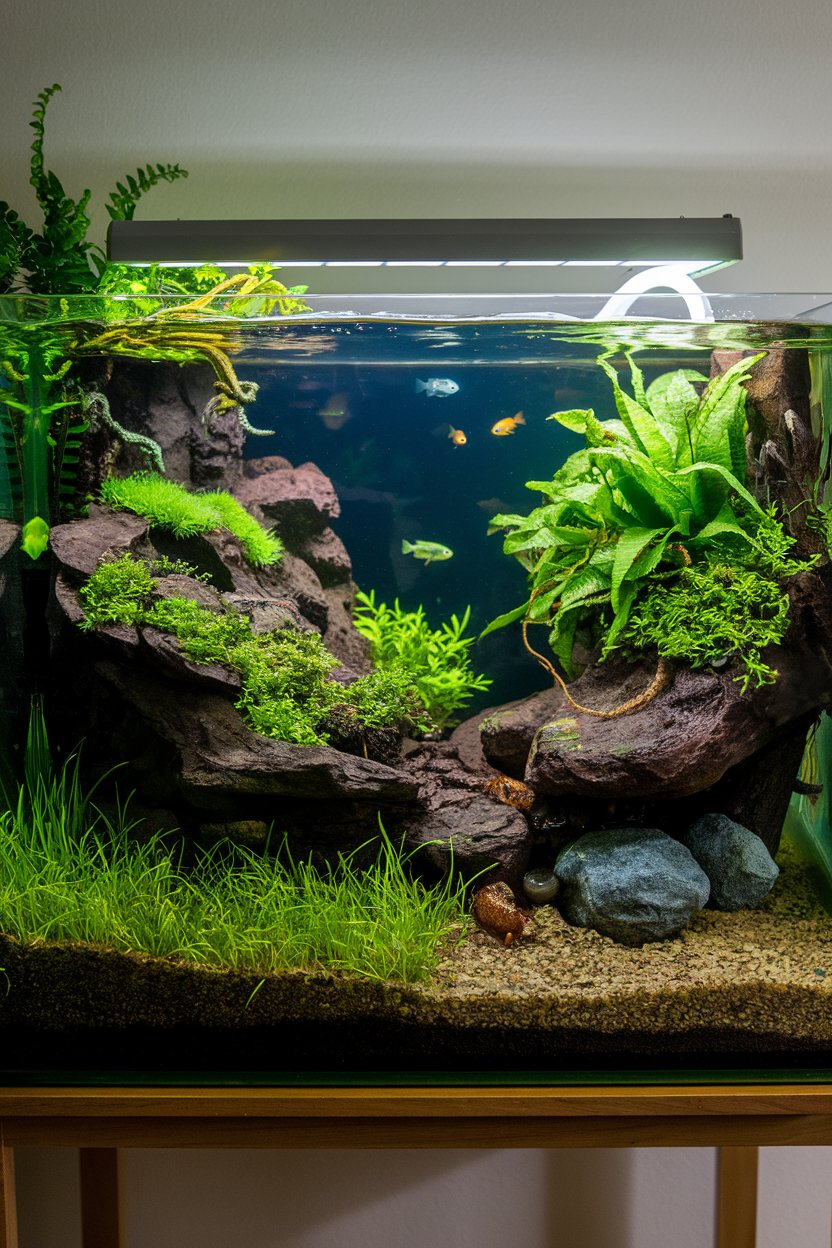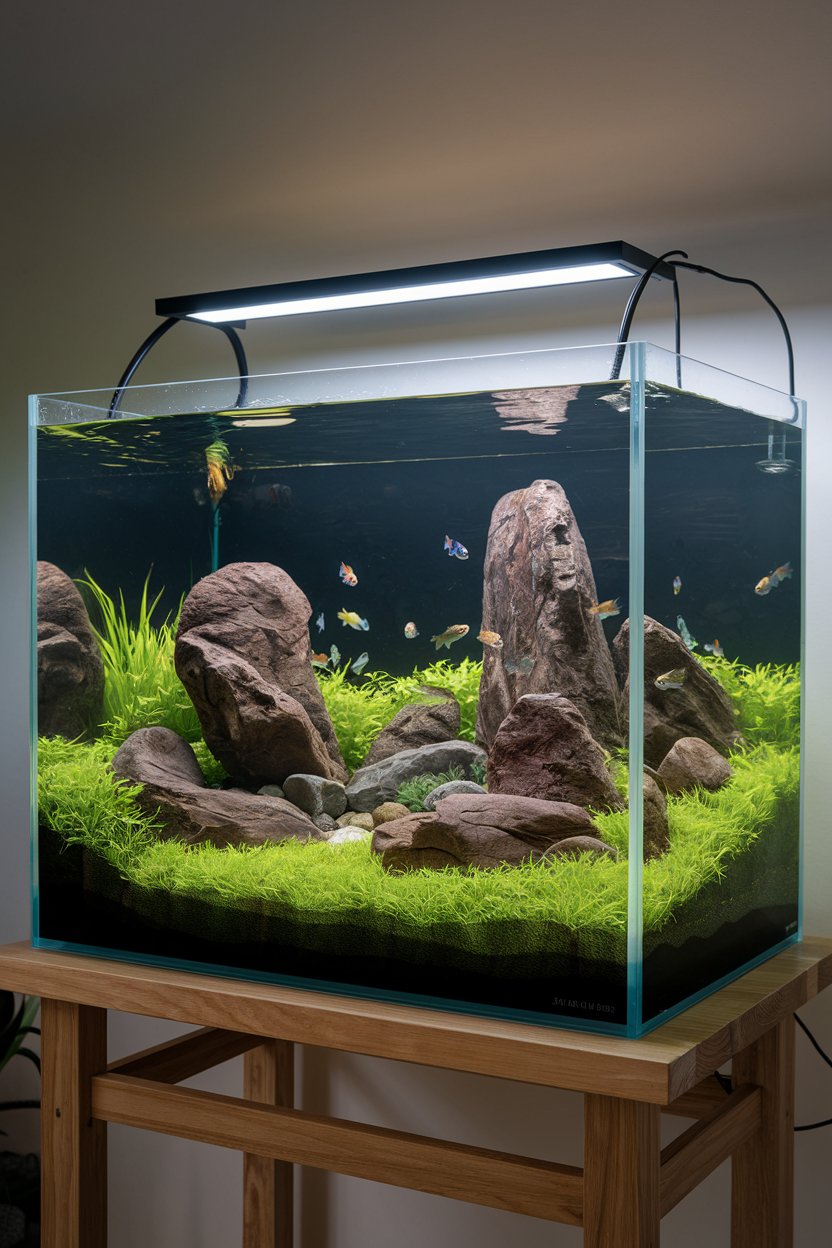13 Stunning Ideas for a 125-Gallon Freshwater Aquarium
A 125-gallon freshwater aquarium offers an expansive canvas for aquarists to create unique underwater landscapes and house diverse species. With ample space for elaborate designs, larger fish, and intricate plant arrangements, this tank size allows for creative setups that bring both beauty and function to any room.
Here, we provide 13 inspiring ideas for designing a 125-gallon freshwater aquarium that can serve as a vibrant focal point.
1. Amazon Biotope Setup
An Amazon biotope replicates the lush, plant-rich environment of South American rivers. Use a dark, sandy substrate as the base and scatter driftwood branches throughout to mimic submerged trees.
Introduce Amazonian plant species like Amazon swords, Vallisneria, and Anubias to create a dense, green layout. Stock with fish species that thrive in Amazonian waters, such as angelfish, tetras, and Corydoras. This biotope provides an authentic look while ensuring compatibility between plant and fish species.
2. Rock Garden Cichlid Tank
Rock gardens are ideal for African cichlid species, which thrive in rocky environments with ample hiding places. Use a mix of limestone and slate to construct caves, crevices, and ledges. Ensure the rock structures are stable to prevent collapsing, as cichlids are active swimmers and may shift loose rocks.
Adding a sandy substrate further enhances the natural aesthetic and encourages digging behavior. African cichlids bring vibrant colors and high activity, making the tank lively and engaging.
3. 
A jungle aquascape showcases a dense, wild arrangement of plants, providing a lush, forested environment. Opt for a nutrient-rich substrate to support heavy planting, and add species like Java fern, Amazon swords, and Cryptocoryne.
The dense foliage offers ample hiding spots, making it ideal for smaller, schooling fish like neon tetras, rasboras, and dwarf gouramis. To maintain the jungle effect, prune regularly, and add floating plants to diffuse the light for a softer, dappled effect.
4. Minimalist Aquascape with Hardscape Focus
Minimalist aquascapes highlight simplicity, using minimal decor and allowing hardscape elements to take center stage. Select large, visually striking stones, like Seiryu or Dragon stones, and arrange them to form a focal point.
This setup works well with a sandy or fine gravel substrate, which maintains a clean look. Stock the tank with a few peaceful, small fish that will complement the minimalist style, such as ember tetras or white cloud minnows. This setup creates a tranquil, sophisticated display that emphasizes balance and structure.
5. Driftwood-Focused Aquarium
Using driftwood as the main feature adds an organic, naturalistic feel to any aquarium. Choose large, branch-like pieces of driftwood and place them strategically to resemble submerged tree roots.
Attach plants like Java moss, Anubias, and Bucephalandra to the wood, enhancing the natural look. This setup mimics the appearance of underwater forests and is ideal for fish that enjoy shaded areas, such as discus, plecos, and loaches.
6. Dutch-Style Aquascape
A Dutch-style aquascape focuses on vibrant, colorful plant arrangements with carefully planned layering. Use nutrient-dense substrate and regular fertilization to promote healthy plant growth. Include species with varying leaf shapes and colors, such as Rotala, Ludwigia, and Hygrophila, to create contrasting rows and groupings.
Fish are typically secondary in this setup, so opt for small, schooling species like cardinal tetras or rasboras. This style requires regular trimming but rewards with a breathtaking, organized underwater garden.
7. Community Fish Tank with Mixed Species
A community tank supports multiple fish species that coexist peacefully. Begin with a soft, sandy substrate and add both driftwood and rocks to create hiding places. Choose plants that are resilient and easy to maintain, like Java fern and Anubias.
Popular fish for community tanks include gouramis, barbs, and various types of tetras. This setup works well as a colorful, active aquarium that suits a wide range of peaceful fish, offering a lively, harmonious display.
8. Blackwater Aquarium with Tannins
Blackwater aquariums replicate the slightly acidic, tannin-rich waters found in tropical regions. Use Indian almond leaves, driftwood, and peat moss to introduce tannins and create the characteristic amber-colored water.
A fine, dark substrate enhances the blackwater effect, and floating plants such as frogbit or duckweed help reduce light levels, creating a more shadowed, natural look. Stock with species like angelfish, rasboras, and gouramis that prefer low-light environments.
9. Sandfall Aquarium with Moving Sand
A sandfall aquarium simulates the effect of an underwater waterfall by creating a cascade of sand. This requires a sandfall feature, created with an air pump to circulate fine sand particles
Place rocks around the sandfall to enhance the visual effect and provide a natural setting. Select fish that won’t disturb the sandfall, such as small tetras or rasboras. This setup is a mesmerizing addition to any space, adding movement and a unique aesthetic element to the tank.
10. Themed Aquarium with Shipwreck
For an adventurous touch, a shipwreck theme offers a playful, imaginative design. Start with a sandy substrate and add decorations like miniature shipwrecks, anchors, and treasure chests. Use sparse plants like Anubias to complement the theme without overwhelming the decor.
This setup suits species like angelfish, barbs, or even a small group of peaceful cichlids. The shipwreck theme is especially popular in family settings and adds a sense of discovery to the aquarium.
11. Paludarium Hybrid Tank
A paludarium combines both aquatic and terrestrial elements, creating a dynamic environment that supports fish and semi-aquatic animals. Designate a section of the tank as a water feature, while using rocks, soil, and plants to create a land area.
Aquatic plants can grow underwater, while mosses and ferns thrive in the humid air above the waterline. This setup supports various species, including amphibians, small fish, and shrimp, offering a unique combination of water and land ecosystems.
12. Iwagumi-Style Aquascape
Iwagumi-style aquascaping highlights rock formations and the natural balance of hardscape and plants. Typically, this style uses an odd number of stones, often three or five, as focal points. Carpet plants like Dwarf hairgrass and Monte Carlo are planted around the rocks, creating a sleek, open look.
Schooling fish, such as neon tetras or danios, add movement without detracting from the minimalist aesthetic. This style requires precision but yields a serene, Zen-inspired tank.
13. Predator Tank for Large Species
For a bold approach, consider a predator tank that houses larger, more aggressive fish species. Use large rocks, driftwood, and plants for robust decor that can withstand heavy activity. Stock with predator fish like Oscars, arowanas, or large cichlids that need substantial swimming space.
A sturdy filtration system is essential to handle the bioload of larger fish. This setup creates a powerful display, showcasing the majestic beauty of large fish species in their natural habitat.
Conclusion
Setting up a 125-gallon freshwater aquarium allows for creativity, experimentation, and the joy of building a balanced aquatic environment. Each of these setups, from natural biotopes to themed designs and plant-focused aquascapes, offers unique ways to utilize the large space and create an eye-catching focal point.
When planning your aquarium, consider the needs of the fish, the type of plants or decorations that align with your vision, and the level of maintenance required. With dedication and a bit of creativity, your 125-gallon aquarium can become a thriving, dynamic display that brings beauty and tranquility to any room.
- Dwarf Bumblebee Catfish Swimming Upside Down – Decoding This Quirky - December 23, 2025
- Do Dwarf Bumblebee Catfish Eat Snails – Your Natural Pest Control - December 23, 2025
- Black Flathead Catfish – Your Beginner’S Guide To A Captivating - December 23, 2025


